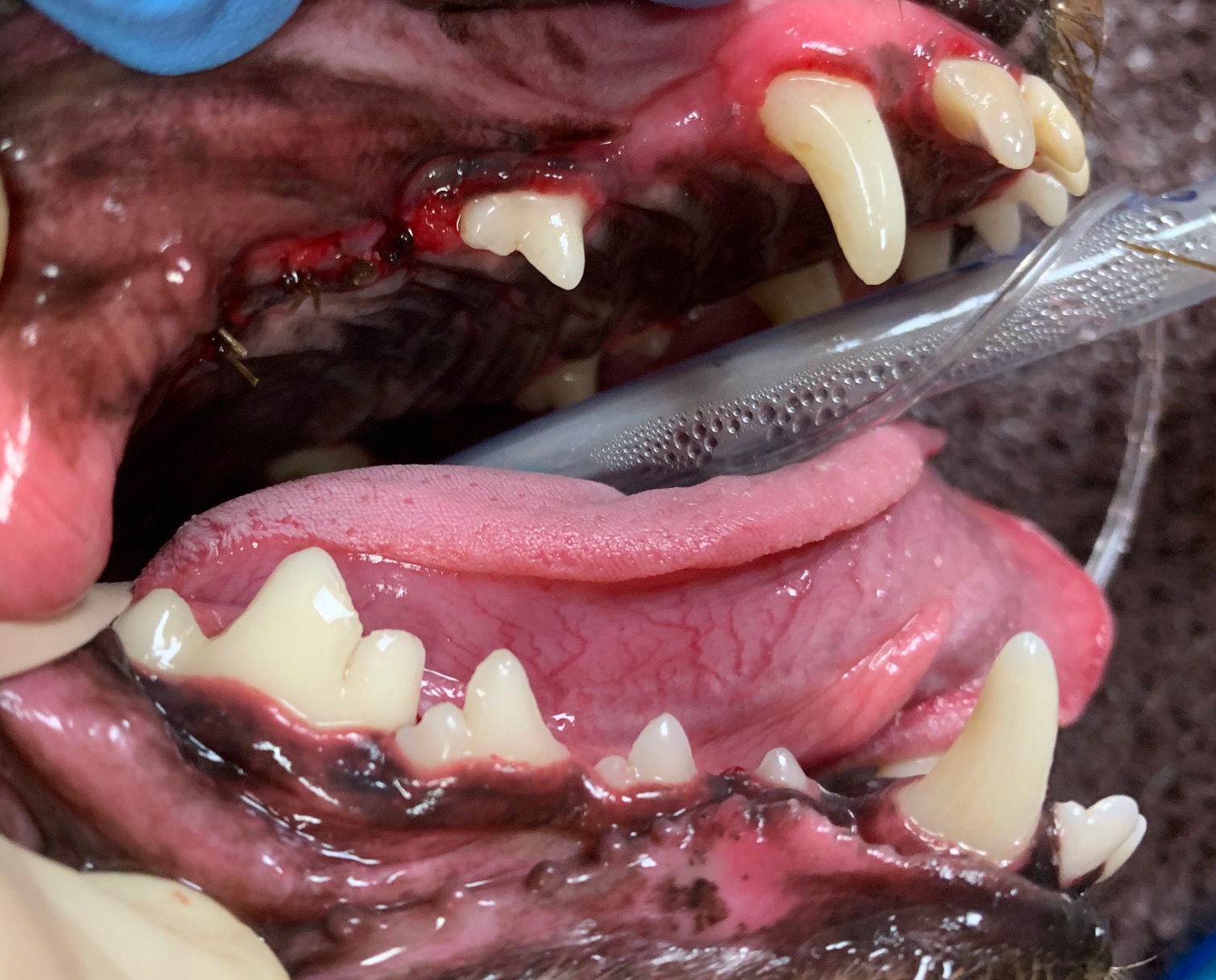Cats and dogs are generally very stoic creatures, and owners often overlook oral pain from dental problems. Even with rotten teeth and serious dental disease, many cats and dogs are still able to eat their food in what seems like a normal manner. Many owners do not actually observe their pets in the act of eating and just refill the food bowls as needed. With severe problems, however, owners may notice symptoms such as drooling, loss of appetite or inability to eat, weight loss, and/or facial swelling. It is important to be aware of your pets’ dental health, as you would for yourself. Ideally, we should be finding problems as early as possible and proactively performing dental prophylaxes on a regular basis to help prevent serious dental disease from happening. Maintaining good oral health is imperative to your pets’ well-being.
Dogs and cats with healthy mouths live longer and happier lives. Living day in and day out with oral pain can be debilitating. I do not know if you have ever had a dental condition- but I had a tooth root abscess once and needed an emergency root canal. My chin swelled up, and it was so painful I could not think of anything else and sought medical attention right away. Ever since then, I have had a lot more respect for our companion animals with rotten teeth that go around living life as if all is well simply because they don’t know anything can be done about it. It is our responsibility as their caretakers to intervene for their sake when such problems as oral pain are identified. That way, we can give our fur critters the longest and happiest life possible, just as they deserve.
Here are a few of the more common painful dental maladies in cats and/or dogs (besides regular tartar and periodontal disease):
1) FORLs (Feline Odontoclastic Resorptive Lesions), also sometimes called neck or cervical line lesions, or simply tooth/tooth root resorption. This one is only a problem in cats. “Cavity” is a misnomer in this case; cavities in people are caused by decay from sugary substances. Cats do not eat sugar (they cannot even taste it!), and these “holes” that form in their teeth seem to happen from an autoimmune cause. More than 50% of cats over 3 years of age suffer from FORLs. These lesions can occur on ANY tooth but most commonly seem to occur on the lower premolars just behind, the lower fangs. If a cat gets one FORL, it is likely they will get more throughout his/her life, unfortunately. The lesions usually start on the crown of the tooth and then extend down into the root until the whole tooth disappears. The process can take many years, and it is very painful during the whole time. When the lesion starts, the inside of the tooth becomes exposed and is very sensitive to the touch. Occasionally the gingiva (or gums) will grow up into or over the hole if it occurs on the crown of the tooth, and this can be seen during a dental examination. Even gently touching these areas usually elicits a very painful flinching and/or teeth chattering from the cat. Even under anesthesia, we can usually observe chattering of the jaw when a probe is passed into these lesions. To treat FORLs, the tooth must be extracted. Radiographs are essential to determine if we can extract the whole tooth or can only amputate the crown of the tooth. In some cases, the roots have undergone resorption so much that full extraction is impossible, but removing the crown and closing the gum over the area is still palliative while the roots finish the resorption process with time. After FORLs have been identified and treated in a cat, it is more important than ever to diligently recheck the cat’s mouth yearly for possible future FORLs.
2) Stomatitis. Stomatitis means inflamed mouth. In cats, it is also called LPSG (lymphocytic plasmacytic stomatitis-gingivitis), or oropharyngeal inflammation. In dogs, this is often identified as CUPS (chronic ulcerative paradental stomatitis). This is another autoimmune disease- it appears affected patients are reacting to their own teeth as if they are foreign bodies. The gums are horribly painful and swollen, in some cases looking to me like “hamburger” in cats. In dogs with CUPS, anywhere the teeth touch the gums/mucosa in the mouth, painful ulcerative lesions develop and smell terrible. In severe cases drooling and difficulty eating or decreased appetite are usually observed. Medical trials with antibiotics and steroids can be helpful, but often more extensive treatments are indicated. In cats, most of the time, in severe cases, extraction of most of the teeth is necessary to resolve the condition, and in some cases, steroids must be continued intermittently even after full extractions. Dogs with CUPS need very frequent dental prophylaxes and home care, with intermittent courses of antibiotics as needed- and if this does not work, full mouth extractions may be indicated. Cats and dogs without any teeth are still able to eat well (canned food or “gumming” down dry food is easy for them). I have had many owners tell me their cats are like kittens again once we get the condition under control, simply because the pain is gone.
3) Oral cancer. Malignant tumors in the mouth that can occur are squamous cell carcinoma, melanoma, fibrosarcoma, lymph sarcoma, and other undifferentiated carcinomas. Treatment depends on the type of cancer and how it behaves. If a mass is identified, biopsies can be obtained for a definitive diagnosis, and then a treatment plan and prognosis can be determined. Clinical signs of oral tumors are similar to stomatitis- drooling, difficulty eating or decreased appetite, and weight loss.
4) Infections, metabolic disease. In cats, infections such as FIV, feline calicivirus, and in both dogs and cats, metabolic conditions like diabetes and kidney failure can all detrimentally affect oral health. FIV-positive cats usually are prone to stomatitis because they cannot fight off the bacterial flora that lives in the mouth as well as cats with normal immune systems. Calicivirus attacks the oral gingiva and causes severe, painful ulcerations on the tongue and palate. Calicivirus can be prevented with regular immunizations (it is included in the “FVRCP/distemper combo” vaccination we recommend to all cats). Cats and dogs with diabetes are also prone to any infection (including oral), and insulin resistance can develop with oral infections, making their diabetes difficult to manage well. Severe kidney disease can eventually cause ulceration along the entire gastrointestinal tract, including the mouth. Regular (at least yearly) physical examinations and a proactive dental prophylaxis plan will help keep our dog and cat patients with these conditions under control. Over time, we can come up with a plan to manage or eliminate their oral pain as much as possible.
5) Fractured teeth. When a tooth is fractured, and the inside of the tooth is exposed, we have two options: extraction or root canal. If we do nothing, the pet will have chronic pain, and eventually, the tooth will abscess. Most of the time, we extract broken teeth because it is a straight forward procedure and eliminates the problem. If saving the tooth is desired/an option, then referral to a veterinary dental specialist for a root canal consultation is recommended (yes, there are veterinary dentists!). Tooth fractures can happen in either cats or dogs and typically happen from a traumatic cause. Cats have particularly thin enamel, so even small chip fractures usually become infected for them. In dogs, most often, we find broken teeth from them chewing on objects that are too hard (rocks, metal, raw bones). Do your best at home to prevent your dog from chewing on these sorts of objects to save their teeth and your pocketbook!
What else can you do at home to help prevent dental disease? Check out the Veterinary Oral Health Council. They have exhaustive lists of oral home care products for dogs and cats that you can buy over the counter that they have approved. The VOHC only approves products that have some research behind them to prove that they actually work. This, together with annual Wellness exams and routine dental prophylaxes, will help you keep your pets’ mouths in order!
I look forward to meeting you and your cats and/or dogs (and taking a peek in their mouths) soon! Please call the hospital to schedule their next checkup, and I will be happy to help you maintain their oral health!
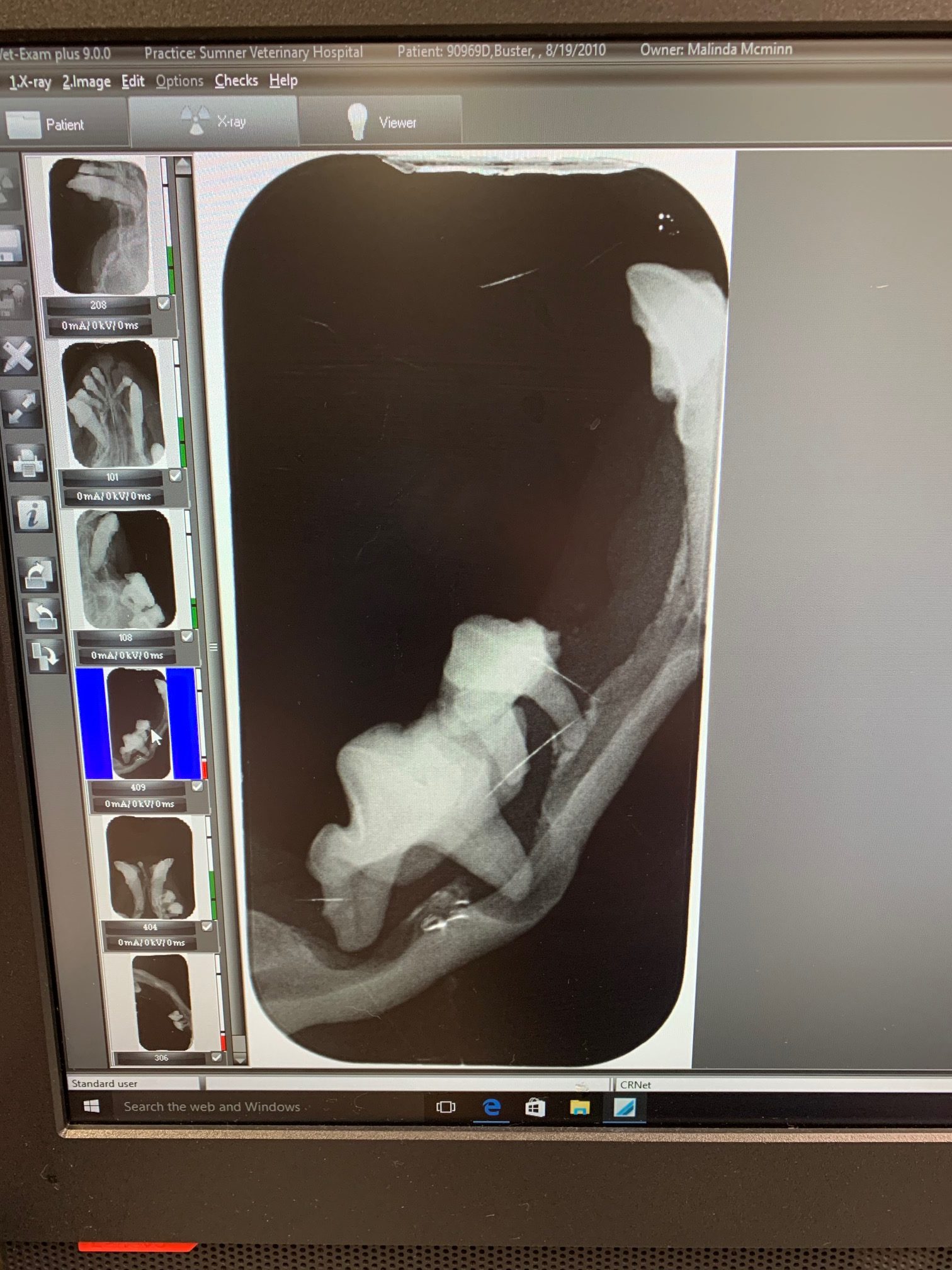
Before
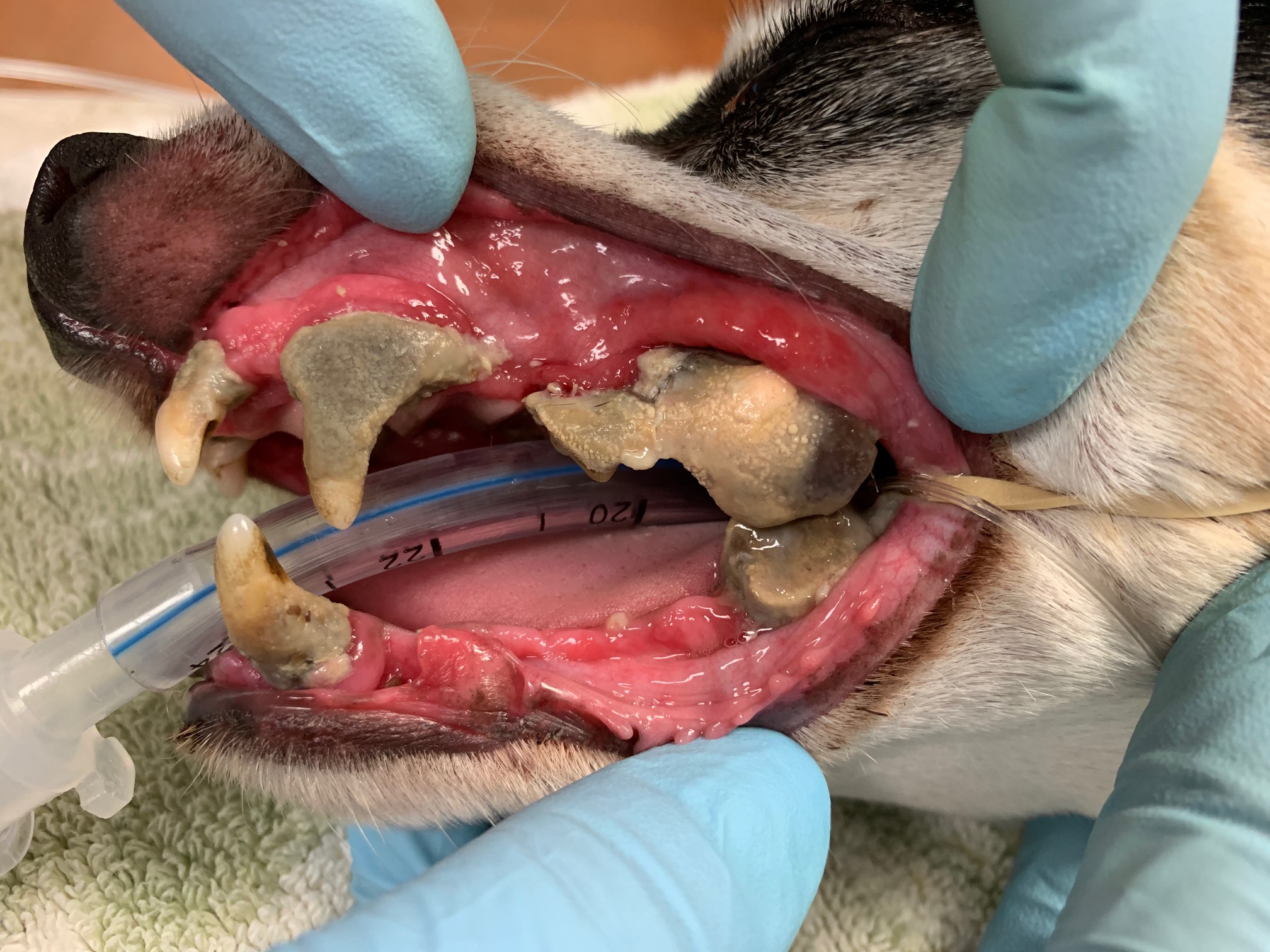
After
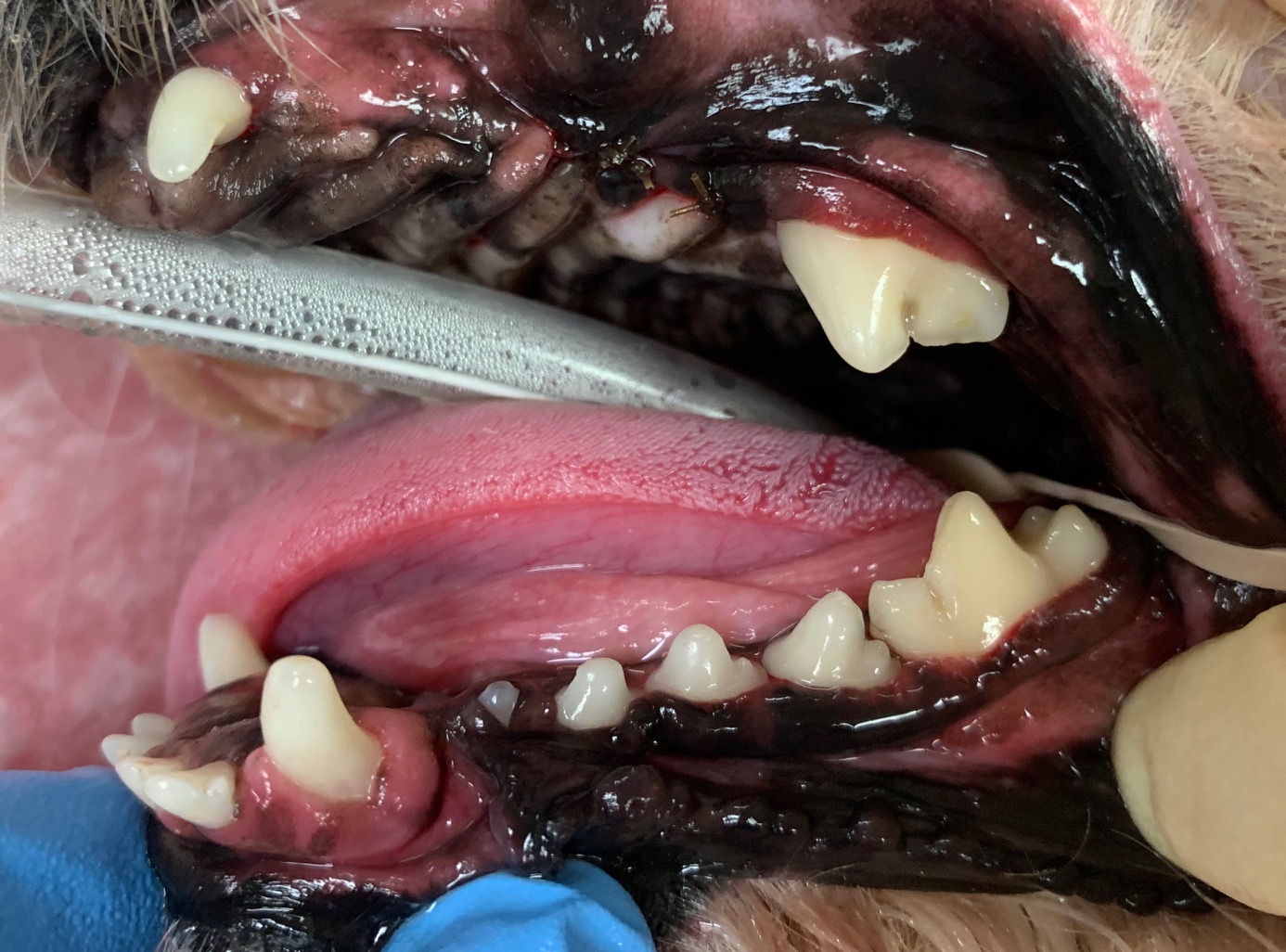
Before
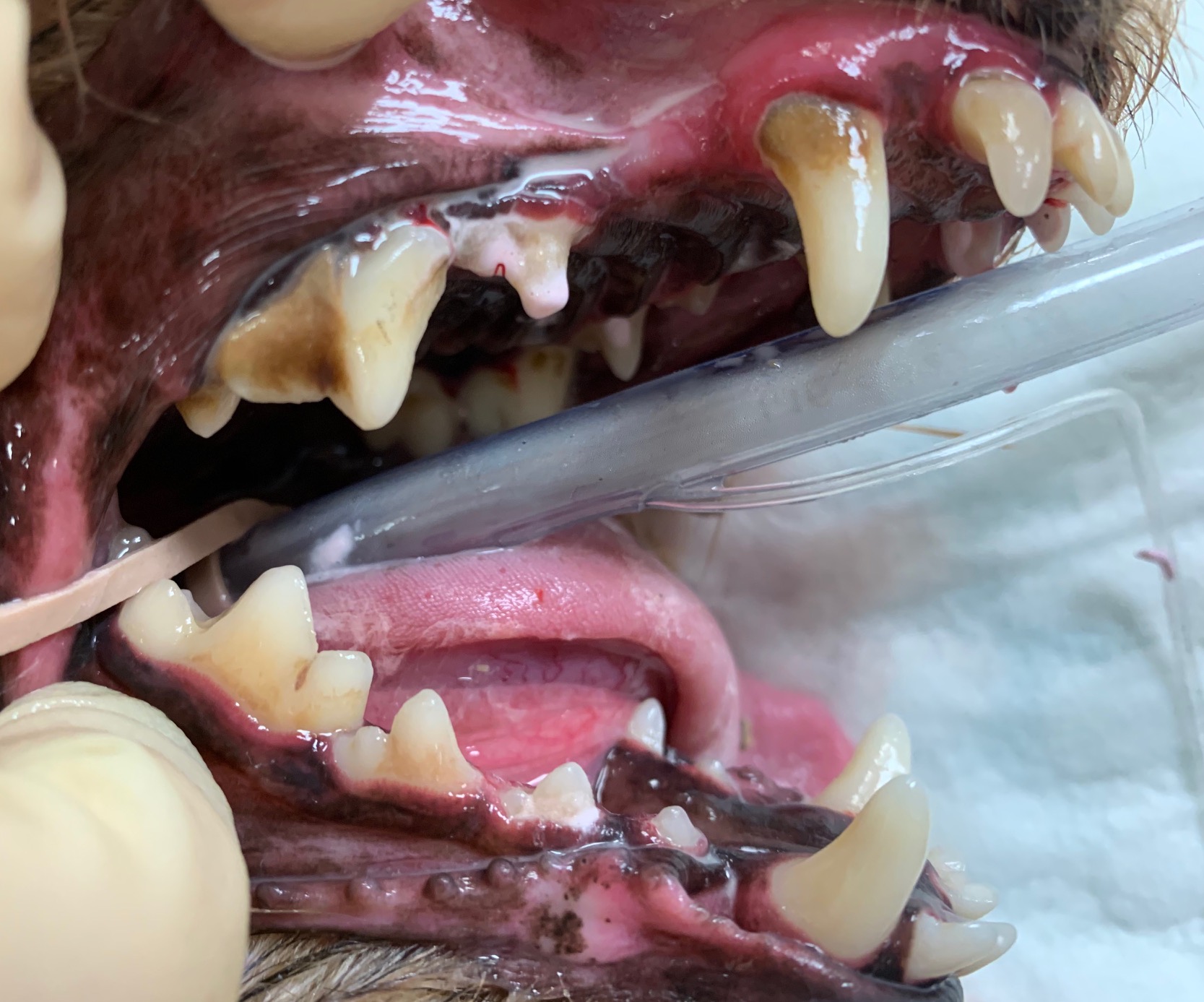
After
